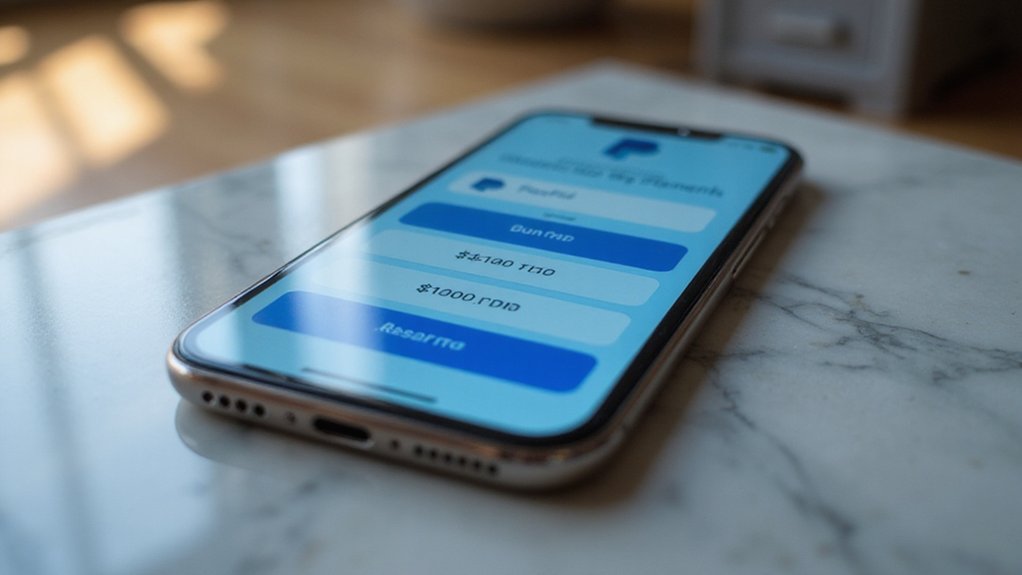Block Inc. officially ascended into the S&P 500 on July 23, 2025, replacing Hess Corporation in what amounts to a fascinating study in modern market mechanics—where a fintech company built on digital payments and Bitcoin evangelism trades places with an oil company freshly acquired by Chevron for $54 billion.
The inclusion sparked an immediate 10.7% surge in Block’s shares, catapulting from $72.01 to $79.69, which proved particularly satisfying given the stock’s 13% year-to-date decline amid broader fintech market pressures.
JPMorgan analysts, perhaps sensing opportunity in chaos, upgraded their price target from $60 to $90 while forecasting net demand of 54.2 million shares—an astonishing 759% of average daily volume that would make any liquidity provider’s pulse quicken.
JPMorgan’s aggressive price target upgrade coincides with forecasted share demand reaching a staggering 759% of typical daily trading volume.
The mechanical buying wave represents pure index fund mathematics: S&P 500 trackers must purchase approximately 70.9 million shares while S&P Composite funds simultaneously shed 16.7 million shares, creating the aforementioned net buying tsunami.
Such is the elegant brutality of passive investing—where inclusion decisions trigger predetermined capital flows regardless of fundamental merit.
Block’s entry carries particular symbolic weight as the third S&P 500 company maintaining Bitcoin treasury reserves. The company’s 8,584 BTC stash (worth roughly $1 billion) positions it between Tesla’s 11,509 BTC and Coinbase’s 9,267 BTC holdings—creating an unusual triumvirate of cryptocurrency-embracing blue chips within America’s premier equity benchmark. The Bitcoin volatility contrasts sharply with the growing popularity of fiat-collateralized stablecoins like USDC and Tether that maintain reserves of actual currency for merchants seeking predictable value. S&P Dow Jones Indices, the largest global resource for index-based data and research, oversees this historic inclusion alongside more traditional indicators like the Dow Jones Industrial Average.
Classification under the Financials sector reflects Wall Street’s ongoing struggle to categorize companies that defy traditional industry boundaries.
Block’s multi-platform ecosystem encompassing Square, Cash App, and Afterpay represents precisely the type of business model evolution that renders sector classifications increasingly arbitrary.
The inclusion validates Jack Dorsey‘s strategic pivot from social media to financial infrastructure, transforming a payments processor into a legitimate Bitcoin proxy with S&P 500 credibility.
JPMorgan highlighted “accelerating product velocity and marketing” as key growth drivers, though one suspects the real catalyst remains cryptocurrency’s inexorable march toward mainstream acceptance.
Index membership provides enhanced visibility and capital access while potentially supporting higher valuation multiples relative to fintech peers. The new five-times multiple reflects a reasonable premium over Block’s current valuation while maintaining a discount to fintech competitors trading at seven to nine times next-twelve-month gross profit.
Whether Block can sustain momentum beyond mechanical index buying depends entirely on execution—a invigoratingly old-fashioned concept in an increasingly algorithmic market.









